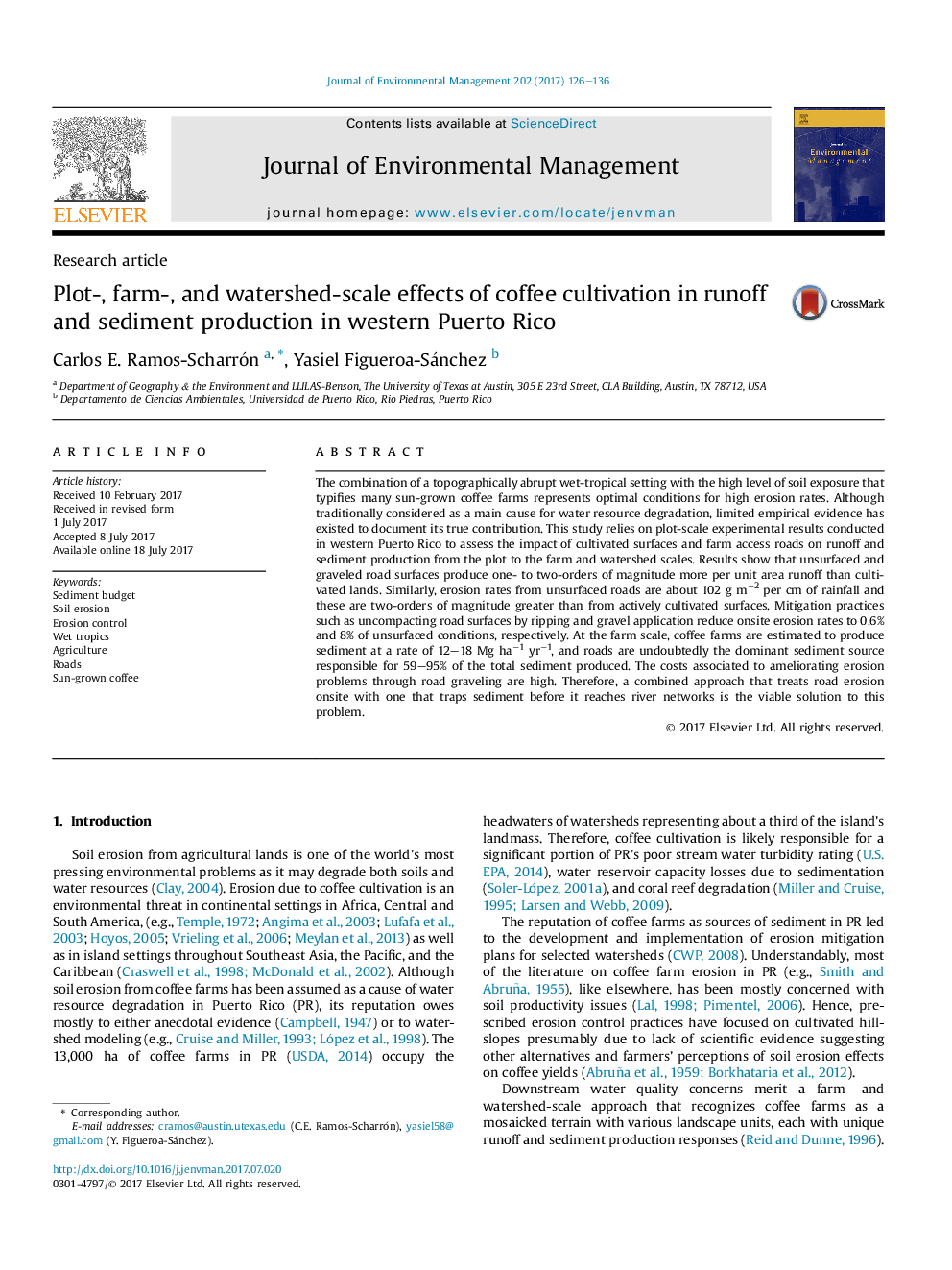| کد مقاله | کد نشریه | سال انتشار | مقاله انگلیسی | نسخه تمام متن |
|---|---|---|---|---|
| 5116463 | 1378098 | 2017 | 11 صفحه PDF | دانلود رایگان |
- Limited empirical evidence exists on the impacts of coffee farms on erosion and water resource degradation.
- Erosion rates from access roads in coffee farms are up to two-orders of magnitude faster than cultivated lands.
- Roads represent up to 95% of the sediment produced at the farm-scale.
- A combination of erosion mitigation strategies are recommended to attend coffee farm as a source of sediments.
The combination of a topographically abrupt wet-tropical setting with the high level of soil exposure that typifies many sun-grown coffee farms represents optimal conditions for high erosion rates. Although traditionally considered as a main cause for water resource degradation, limited empirical evidence has existed to document its true contribution. This study relies on plot-scale experimental results conducted in western Puerto Rico to assess the impact of cultivated surfaces and farm access roads on runoff and sediment production from the plot to the farm and watershed scales. Results show that unsurfaced and graveled road surfaces produce one- to two-orders of magnitude more per unit area runoff than cultivated lands. Similarly, erosion rates from unsurfaced roads are about 102 g mâ2 per cm of rainfall and these are two-orders of magnitude greater than from actively cultivated surfaces. Mitigation practices such as uncompacting road surfaces by ripping and gravel application reduce onsite erosion rates to 0.6% and 8% of unsurfaced conditions, respectively. At the farm scale, coffee farms are estimated to produce sediment at a rate of 12-18 Mg haâ1 yrâ1, and roads are undoubtedly the dominant sediment source responsible for 59-95% of the total sediment produced. The costs associated to ameliorating erosion problems through road graveling are high. Therefore, a combined approach that treats road erosion onsite with one that traps sediment before it reaches river networks is the viable solution to this problem.
Journal: Journal of Environmental Management - Volume 202, Part 1, 1 November 2017, Pages 126-136
